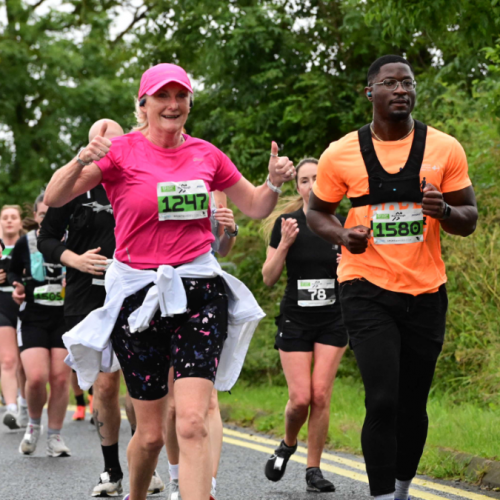Sleep quality significantly affects how effective a morning workout can be. A well-rested body wakes up with balanced hormones, refreshed muscles, and restored energy levels, creating the ideal conditions for physical activity. When sleep is disrupted or insufficient, energy drops, focus declines, and the ability to perform exercise at an optimal level is reduced. Understanding how sleep interacts with exercise readiness helps create routines that support better health and stronger performance outcomes.
Monitoring Sleep and Training Readiness
Sleep quality directly influences how the body responds to morning exercise. Those who consistently monitor heart rate variability and related markers can identify when they have recovered adequately for training. Without technology, these signals are not always obvious, but they can reveal hidden signs of fatigue or incomplete recovery.
Professional and recreational athletes benefit from tools connecting recovery patterns with training adjustments. Systems that track both sleep and daily activity offer a more complete picture of readiness. For example, using a heart rate monitor makes it possible to see how well the cardiovascular system has recovered before training begins. This supports athlete monitoring practices that reduce unnecessary strain and encourage safer long-term progress.
Why Sleep Quality Shapes Morning Performance
Sleep is more than rest. During deep stages, the body repairs tissues and restores hormone balance, preparing muscles and the nervous system for the next day. When these processes are disrupted, morning exercise becomes harder, energy levels dip, and motivation may suffer.
Tracking changes with a heartbeat monitor or heart monitor sensor provides insights into how sleep influences recovery. Higher variability readings suggest that the body is well prepared, while lower or declining values can indicate fatigue. Coaches and individuals can then adapt training to match these signals, avoiding burnout and encouraging steady improvement.
Using Metrics for Smarter Decisions
Daily measurements such as resting heart rate, sleep duration, and variability give valuable feedback about recovery. Athletes who regularly monitor heart rate learn to recognise patterns that guide whether a demanding workout is suitable. For example, consistently high resting rates after poor sleep may suggest choosing lighter activity to protect long-term fitness.
Sports analytics technology has made this process accessible beyond elite teams. Wearables now provide instant feedback, turning complex data into actionable insights. Whether for endurance training or gym sessions, these tools help ensure activity levels are aligned with recovery status.
Morning Heart Rate as a Recovery Signal
One of the simplest ways to track recovery is to measure heart rate upon waking. If the number is above normal ranges, it may point to insufficient rest or additional stress. Combined with variability readings, this helps distinguish between normal tiredness and genuine fatigue.
Rather than focusing on single results, observing trends over several days gives more reliable guidance. A heart rate variability monitor can highlight subtle but important changes that would go unnoticed. This allows individuals to adjust intensity before problems arise, supporting healthier routines and sustainable training habits.
Interpreting Heart Rate Variability
Heart rate variability provides deeper insight into how the body adapts to stress, training, and recovery. A consistently higher variability reflects resilience and readiness, while persistent declines can signal overtraining or inadequate recovery strategies.
Modern devices capture these details in real time, making them practical for everyday use. Regular checks with the best heart rate monitor help individuals tailor sessions to their readiness. This avoids pushing too hard on days when the body is struggling and allows more demanding sessions when recovery signals are positive.
Building Sleep-Responsive Morning Routines
Effective morning routines consider recovery signals. Waking during lighter stages of sleep makes exercise feel more manageable and reduces grogginess. Tools that align wake-up times with sleep cycles can make this adjustment easier.
Good evening habits also play a role in morning success. Reducing screen use, eating lighter meals, and practising relaxation techniques can all improve sleep quality. These adjustments lead to better energy in the morning, which is supported by athlete monitoring technology that confirms readiness for training.
Nutrition, Hydration, and Exercise Outcomes
What is consumed before bed can affect both sleep and performance. Heavy or overly spiced meals often interfere with sleep quality, while balanced snacks with protein can support overnight recovery. Hydration also influences rest, but drinking too much too close to bedtime can cause disruption.
In the morning, light and digestible fuel helps to prepare the body for exercise. Monitoring these choices with a heart monitor sensor or wearable device shows how nutrition interacts with recovery. Feedback during workouts reveals how well the body adapts, supporting smarter and more consistent progress.
Technology Supporting Recovery Awareness
Advances in wearable devices have made connecting sleep and exercise data easier. Once restricted to professional teams, these technologies now help everyday users track recovery and performance. Devices measure sleep duration, quality, and disruptions while automatically capturing heart rate trends.
Team monitoring software adds another layer for athletes training in groups. Coaches can view real-time information across a squad and adjust workloads where necessary. This ensures training is balanced and tailored to individual recovery, reducing injury risk while sustaining long-term performance improvements.
Preventing Overtraining Through Monitoring
Long-term patterns matter more than isolated results. Regularly tracking trends helps to identify early signs of overtraining, such as consistently elevated resting heart rates or reduced variability. By spotting these markers early, athletes can adjust workloads before fatigue develops into injury or burnout.
This preventative approach is strengthened by sports analytics systems that convert complex numbers into simple readiness scores. Individuals gain confidence in their training plans while reducing uncertainty about when to push harder or when to step back.
Take Charge of Your Recovery and Performance
The relationship between sleep quality and morning workouts highlights how important recovery is to fitness success. By using monitoring tools such as a heart rate variability monitor, a heart monitor sensor, and team monitoring software, athletes and fitness enthusiasts can balance their routines more effectively. These tools, supported by sports analytics, turn hidden patterns into actionable insights that shape safer and more productive exercise habits.
The post The Hidden Link Between Sleep Quality and Morning Workouts appeared first on Hip & Healthy.



